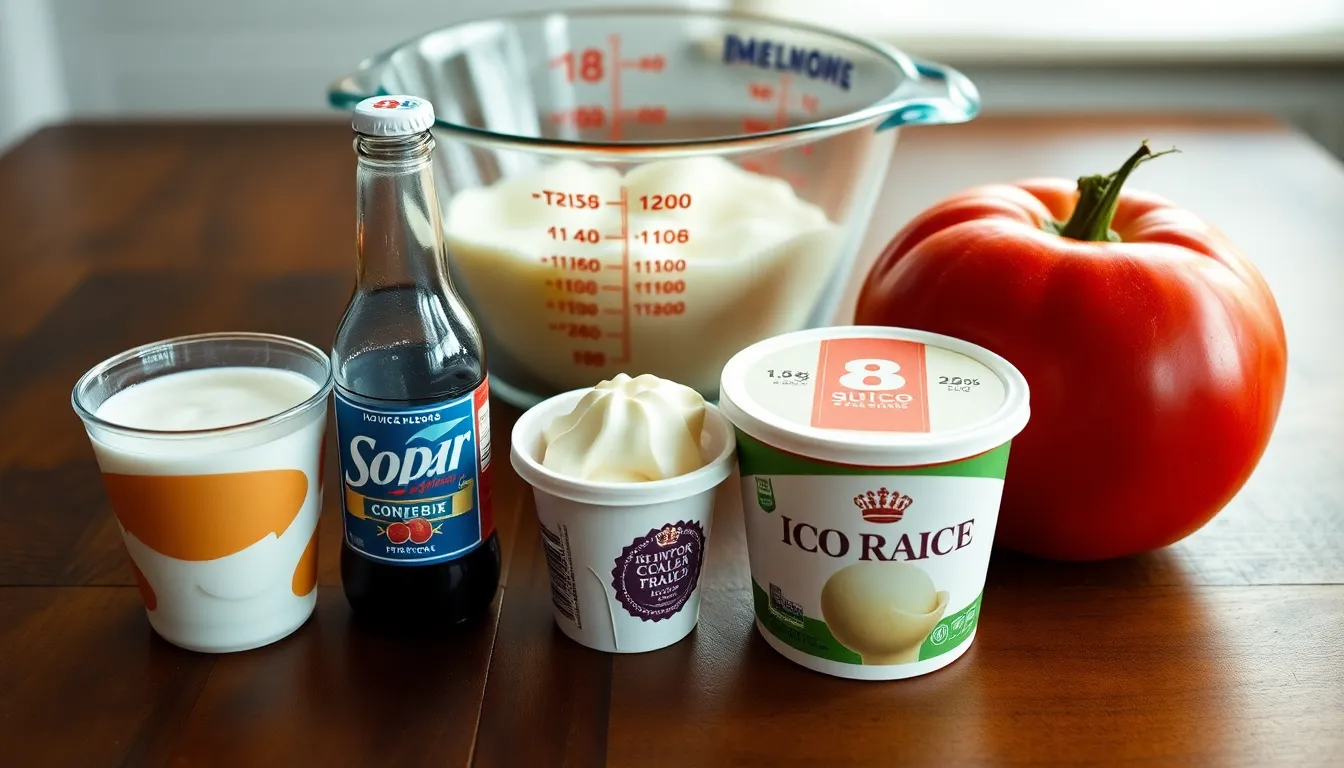When it comes to measuring liquids, 8 ounces can feel like a mystery wrapped in a riddle. Is it a cup of coffee? A tiny fishbowl? It’s the perfect amount for a refreshing glass of water, but how does it stack up against everyday items?
Imagine holding a pint of ice cream in one hand and a small bottle of soda in the other. Both are 8 ounces, yet they tell very different stories. Understanding this seemingly simple measurement can make a world of difference in cooking, crafting, or just quenching your thirst. So, let’s dive into the world of ounces and uncover just how big— or small— 8 ounces really is.
Table of Contents
ToggleUnderstanding 8 Oz
8 ounces represents a specific volume measurement used in various contexts. When measuring liquids, it’s equivalent to one cup. Familiar items help in visualizing 8 ounces, such as a typical restaurant serving of soda or a cup of yogurt.
Cooking frequently relies on precise measurements. In recipes, 8 ounces may refer to both liquid and solid ingredients. For instance, 8 ounces of grated cheese corresponds to roughly 2 cups when shredded, while 8 ounces of fluid, like milk, fills one cup.
Understanding this measurement aids not only chefs but also individuals engaging in activities requiring precise quantities. Crafters may find an 8-ounce container useful for mixing paints or storing supplies. Hydration plays a crucial role in daily health, where 8 ounces equals a standard glass of water, providing a clear goal for daily intake.
A pint, which equals 16 ounces, serves as a useful comparison. In this context, 8 ounces represents half a pint, a common serving size for various beverages. In baking, 8 ounces of flour or sugar finds its place in many recipes, ensuring desired texture and taste.
Visual aids often bridge the gap in understanding. Comparing 8 ounces to other familiar quantities simplifies the concept. Knowing how this measurement relates to typical servings in everyday life enhances one’s ability to gauge portions accurately.
Visualizing 8 Oz

Visualizing 8 ounces can enhance understanding and aid in daily measurement tasks.
Common Items That Weigh 8 Oz
Several items equal 8 ounces, which makes it easier to grasp this measurement. A standard cup of yogurt represents this volume. Another common example includes a small bottle of soda. Eight ounces also matches a half-pint of ice cream. Canned vegetables often contain this quantity as well. One large tomato can weigh about 8 ounces, and a medium-sized apple often approaches this weight. Understanding these familiar items aids in visualizing how much 8 ounces of different substances looks like practically.
Comparing 8 Oz to Other Measurements
Eight ounces equates to specific units, which provide a clearer perspective. It represents one cup in liquid measurements. This amount is roughly half a pint and enables easy conversions for beverages. When considering solid ingredients, 8 ounces of cheese can refer to about 2 cups when shredded. It also equals 240 milliliters, which often appears on nutrition labels. Being aware of these comparisons helps with cooking and baking, ensuring accuracy for recipes and portioning. Understanding these relationships fosters improved measuring skills for various tasks.
Practical Uses of 8 Oz
8 ounces plays a vital role in cooking, baking, and beverage serving, making it essential for everyday tasks.
Cooking and Baking Applications
Cooking and baking often require precise measurements. For instance, 8 ounces of grated cheese equals about 2 cups when shredded, impacting the dish’s flavor and texture. In baking recipes, measuring 8 ounces of flour encompasses around 2 cups, ensuring accuracy for optimal results. When making sauces or dressings, using 8 ounces of liquid helps achieve the right consistency. Many recipes call for a cup of liquid, and since 8 ounces equals one cup, it simplifies measurement. Chefs value understanding this measurement as it leads to successful dishes, from homemade pizzas to cakes.
Beverage Serving Sizes
Beverage serving sizes frequently incorporate 8 ounces. One standard glass of water holds 8 ounces, aiding hydration needs throughout the day. Many soft drinks and juices come in 8-ounce containers, offering a manageable portion. In restaurants, an 8-ounce soda serves as a common size for beverages, providing a refreshing experience without excessive consumption. When measuring out drinks, 8 ounces translates well for mixers in cocktails, ensuring balanced flavors. Understanding these sizes aids in making informed choices about hydration and beverage consumption.
Conversion Factors for 8 Oz
8 ounces converts to 1 cup when measuring liquids, which is key in cooking and baking. In metric terms, 8 ounces equals approximately 240 milliliters. For solid ingredients, such as cheese, 8 ounces can translate to about 2 cups when shredded. This conversion highlights the importance of precise measuring in culinary practices.
Converting ounces into pints provides additional clarity. Eight ounces represents half a pint, commonly used for serving beverages. A standard bottle of soda typically contains 12 ounces, making an 8-ounce serving approximately two-thirds of that bottle. Furthermore, understanding how many ounces fit into different containers aids in effective portion control.
Visual aids make grasping 8 ounces easier. Many everyday items can serve as references, such as a medium-sized apple or a large tomato. Recognizing these common items allows for better mental comparisons during meal preparation.
In terms of hydration, 8 ounces equates to a typical glass of water, crucial for daily intake goals. Recognizing this measurement assists in understanding fluid consumption. When choosing beverages, knowing that 8 ounces is a standard serving helps in making informed decisions.
These conversion factors emphasize how 8 ounces applies across various contexts. It plays a significant role in cooking, baking, and everyday hydration practices. Grasping these relationships fosters better measuring skills for precise outcomes in the kitchen and beyond.
Understanding how big 8 ounces is can greatly enhance everyday activities like cooking and hydration. This measurement isn’t just a number; it’s a practical reference that helps in making informed choices about portion sizes and ingredient quantities.
By visualizing 8 ounces through common items, individuals can grasp its significance more easily. Whether it’s for whipping up a delicious recipe or ensuring adequate water intake, recognizing this measurement’s role is essential.
With 8 ounces being equivalent to one cup and half a pint, it serves as a useful benchmark in various contexts. Embracing this knowledge empowers individuals to navigate their culinary and hydration needs with confidence.




